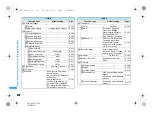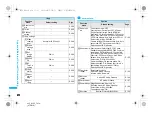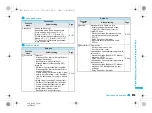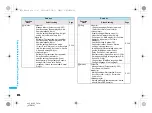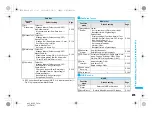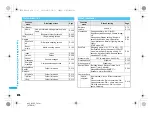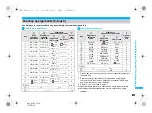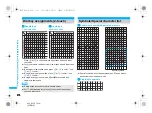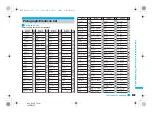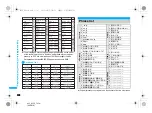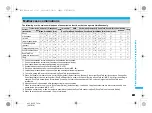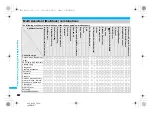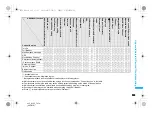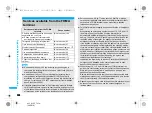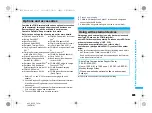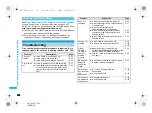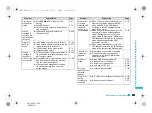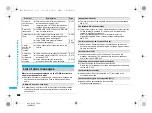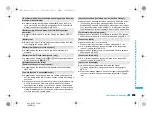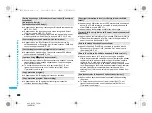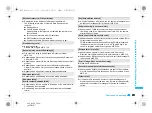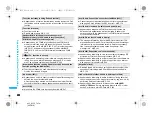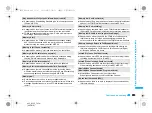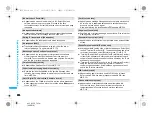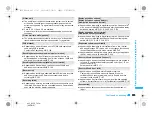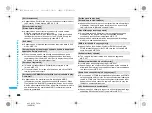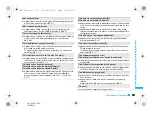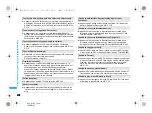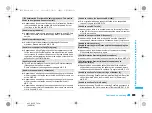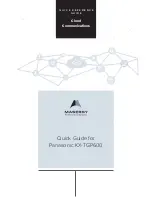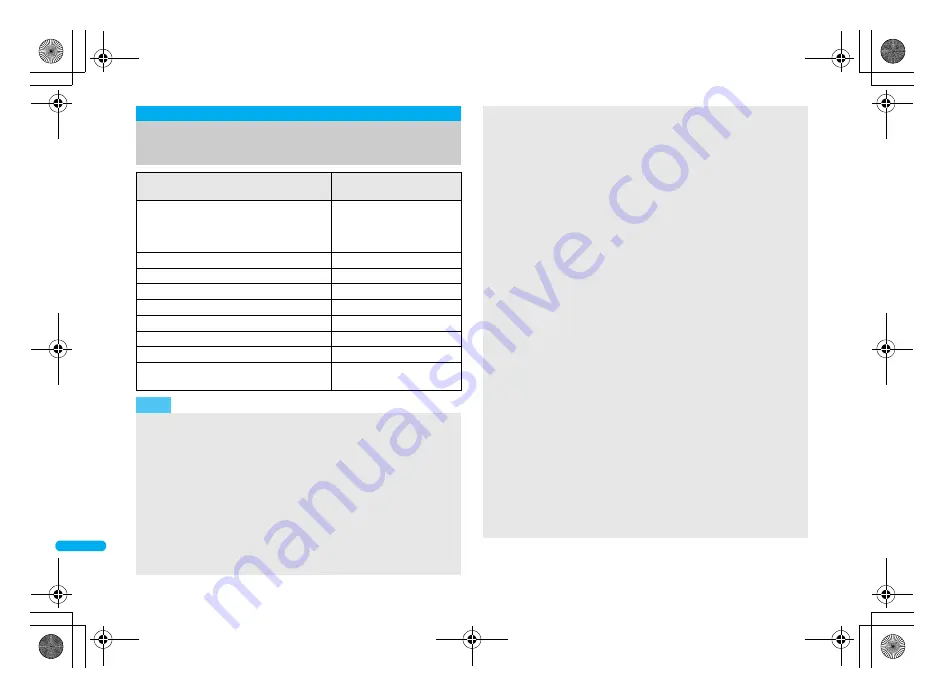
484
e23_dv55_7e.fm
[484/518]
App
en
d
ix/Extern
al D
evices
/T
ro
ub
le
sho
o
ting
Services available from the FOMA
terminal
Services available from the FOMA
terminal
Phone number
Directory assistance service (fees apply:
assistance fee + call fee)
Phone numbers of customers who
decline being listed are not available.
(No area code) 104
Telegrams (fees apply: telegram fee)
(No area code) 115
Time tone service (fees apply)
(No area code) 117
Weather forecast (fees apply)
Area code of 177
Police emergencies
(No area code) 110
Fire department/Medical assistance
(No area code) 119
Emergencies and accidents at sea
(No area code) 118
Disaster message (fees apply)
(No area code) 171
Collect call (fees apply: assistance fee +
call fee)
(No area code) 106
Note
An additional 90 yen (94.5 yen including tax) handling fee is
charged to the recipient for each call when collect calls (106) are
made (as of April 2008).
An additional 100 yen (105 yen including tax) directory fee is
charged when using directory assistance (104). People with
disabilities in vision or upper limbs can receive this service free of
charge. For details, call 116 (NTT sales counter) from a landline
phone (as of April 2008).
If landline phones subscribed to “Call forwarding” are set to forward
calls to mobile phones, callers may hear the phone ringing even if the
mobile phone is busy, outside the service area, in Self mode or turned
off depending on the settings for the landline phones/mobile phones.
Services such as 116 (NTT sales counter), Dial Q2, message
service and credit card calls are not available (Automatic credit
card calls to a FOMA terminal can be made from a landline
telephone or payphone).
This FOMA terminal supports “Location notification of emergency
call”.
When dialing an emergency number such as 110, 118, and 119,
the information of your location (location information) is
automatically notified to the agency that receive the emergency
call (e.g. the police station). Depending on your location and the
reception status of the signal, the agency that received the
emergency call may not be able to confirm the exact location.
If the location information is notified, the name of the agency that
received the emergency call is displayed in the stand-by display.
If you are not sending your caller ID by calling with
184
added or
other means, your location information and phone number are not
notified. However, if the agency that received the emergency call
considers your location information and phone number necessary
for important purposes, such as life saving, the agency can
retrieve them regardless of your settings.
In addition, the area/timing to introduce “Location notification of
emergency call” depends on the state of preparation in each
agency that receives emergency calls.
When calling 110, 119, and 118 from your FOMA terminal, the
police or fire stations may return your call for verification purposes.
State that you are calling from a mobile phone, and give your
phone number and exact location.
Remain stationary to ensure that you are not disconnected while
making an emergency call, and keep handset turned on to receive
calls for approximately 10 minutes afterwards.
Depending on the region, calls to the police or fire station may not
be connected. In such cases, use the nearest payphone or
landline phone.
dv55_E.book 484 ページ 2008年5月6日 火曜日 午前9時8分

